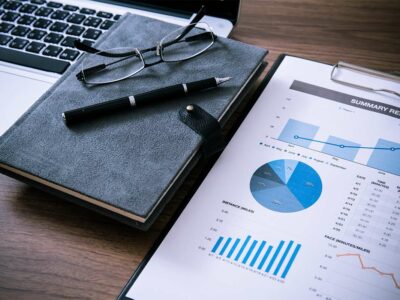Bookkeeping
Assets vs Liabilities: Examples & Difference 2024

You determine your net worth by subtracting your liabilities from your assets. Liabilities play an important role in both personal and business finance. Here are the main ways that liabilities have an impact on your finances. Adam Hayes, Ph.D., CFA, is a financial writer with 15+ years Wall Street experience as a derivatives trader. Besides his extensive derivative trading expertise, Adam is an expert in economics and behavioral finance. Adam received his master’s in economics from The New School for Social Research and his Ph.D. from the University of Wisconsin-Madison in sociology.
- The first thing the accountant did was to make a list of his liabilities and shared the figures with Amrish.
- That is to say, notes and loans are usually listed first, then accounts payable, and finally accrued liabilities and taxes.
- Both the current and quick ratios help with the analysis of a company’s financial solvency and management of its current liabilities.
- Because a liability is always something owed, it is always considered payable to some entity.
- Most people aim to build a positive net worth over time, especially as they enter retirement.
- A firm may receive cash in advance of performing some service or providing some goods.
Liabilities vs. expenses
Balance sheet critics point out its use of book values versus market values, which can be under or over-inflated. These variances are explained in reports like “statements of financial condition” and footnotes, so it’s wise to dig beyond a simple balance sheet. A robust credit history separates finances, enhances credibility, and unlocks diverse financing. Timely 4th quarter estimated tax payments are crucial to avoid penalties and maintain financial stability. Understanding criteria, accurate calculations, and prompt payments are key for individuals with irregular income.
Our Team Will Connect You With a Vetted, Trusted Professional
“Where people start getting into a lot of trouble is they start buying things on debt assuming they’re going to have money left for their other goals, and it never ends up working that way,” Swanburg says. These articles and related content is the property of The liabilities are the amounts of money due to others that need to be paid now. Sage Group plc or its contractors or its licensors (“Sage”). Please do not copy, reproduce, modify, distribute or disburse without express consent from Sage.These articles and related content is provided as a general guidance for informational purposes only.

Examples of Liabilities
- This team of experts helps Finance Strategists maintain the highest level of accuracy and professionalism possible.
- In that way, liabilities can actually help you build up assets over time.
- Even if it’s just the electric bill and rent for your office, they still need to be tracked and recorded.
- Therefore, the value of the liability at the time incurred is actually less than the cash required to be paid in the future.
- The balance of the principal or interest owed on the loan would be considered a long-term liability.
- Included in this category are accounts such as Accounts Payable, Trade Notes Payable, Current Maturities of Long-term Debt, Interest Payable, and Dividends Payable.
- When using accrual accounting, you’ll likely run into times when you need to record accrued expenses.
A number higher than one is ideal for both the current and quick ratios, since it demonstrates that there are more current assets to pay current short-term debts. However, if the number is too high, it could mean the company is not leveraging its assets as well as it otherwise could be. The quick ratio is the same formula as the current ratio, except that it subtracts the value of total inventories beforehand.
Firm of the Future

We may earn a commission when you click on a link or make a purchase through the links on our site. All of our content is based on objective analysis, and the opinions are our own. Once you identify all of your liabilities and assets, you can find your net worth. Many, or all, of the products featured on this page are from our advertising partners who compensate us when you take certain actions on our website or click to take an action on their website.

Most accounts payable items need to be paid within 30 days, although in some cases it may be as little as 10 days, depending on the accounting terms offered by the vendor or supplier. Short-term, or current liabilities, are liabilities that are due within one year or less. They can include payroll expenses, rent, and accounts payable (AP), money owed by a company to its customers. Suppose a company receives tax preparation services from its external auditor, to whom it must pay $1 million within the next 60 days.
- Because liabilities are outstanding balances, they are considered to work against the overall spending power of a company.
- A capital lease refers to the leasing of equipment rather than purchasing the equipment for cash.
- Other line items like accounts payable (AP) and various future liabilities like payroll taxes will be higher current debt obligations for smaller companies.
- Other definitely determinable liabilities include accrued liabilities such as interest, wages payable, and unearned revenues.
- The present value is related to the idea of the time value of money.
- Getting your debts in a good place before you stop working is key to enjoying a stress-free retirement, when most people are on a fixed income.
- In all cases, the business is indebted and that debt is recorded as a liability.
Get in touch with us today to learn how we can look after your books and help you save time and money. But the accountant had a good laugh and went on to share the details of the art gallery’s profits, which looked very respectable. After a long career as an art dealer, Amrish Chauhan opened an art gallery in New York City in his early fifties.
What are Total Liabilities?
In addition to the above, businesses may also classify liabilities as either current or long-term. A liability is anything you owe to another individual or an entity such as a lender or tax authority. The term can also refer to a legal obligation or an action you’re obligated to take. Yarilet Perez is an experienced multimedia journalist and fact-checker with a Master of Science in Journalism. She has worked in multiple cities covering breaking news, politics, education, and more.
- This line item is in constant flux as bonds are issued, mature, or called back by the issuer.
- That is, when incurred, the liability is measured and recorded at the current market value of the asset or service received.
- It might signal weak financial stability if a company has had more expenses than revenues for the last three years because it’s been losing money for those years.
- Interestingly enough, some of a business’s assets are another party’s liabilities.
- In general, if a company has relatively low total liabilities, it may gain favorable interest rates on any new debt it undertakes from lenders, as lower total liabilities lessen the chance of default risk.
- In addition to the above, businesses may also classify liabilities as either current or long-term.

